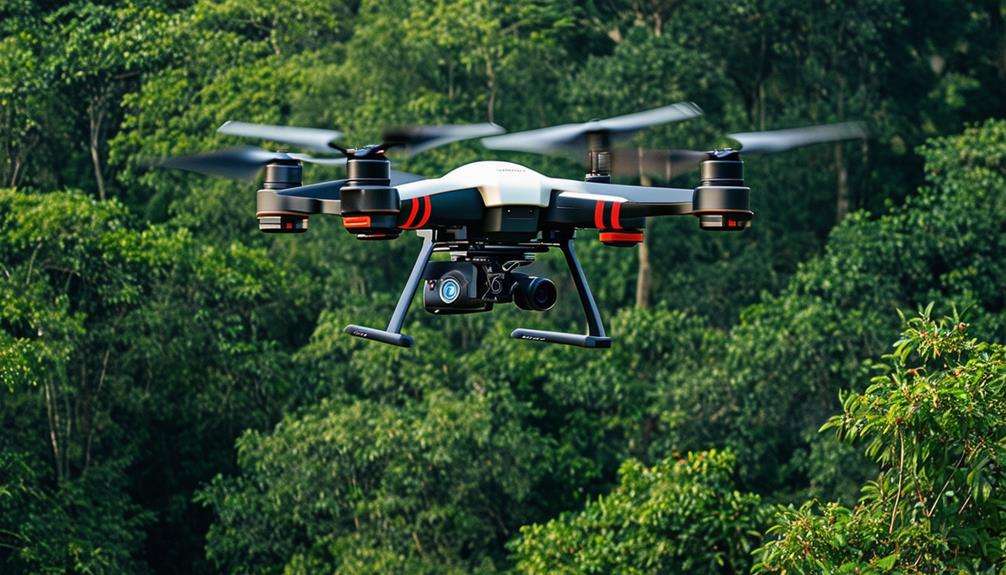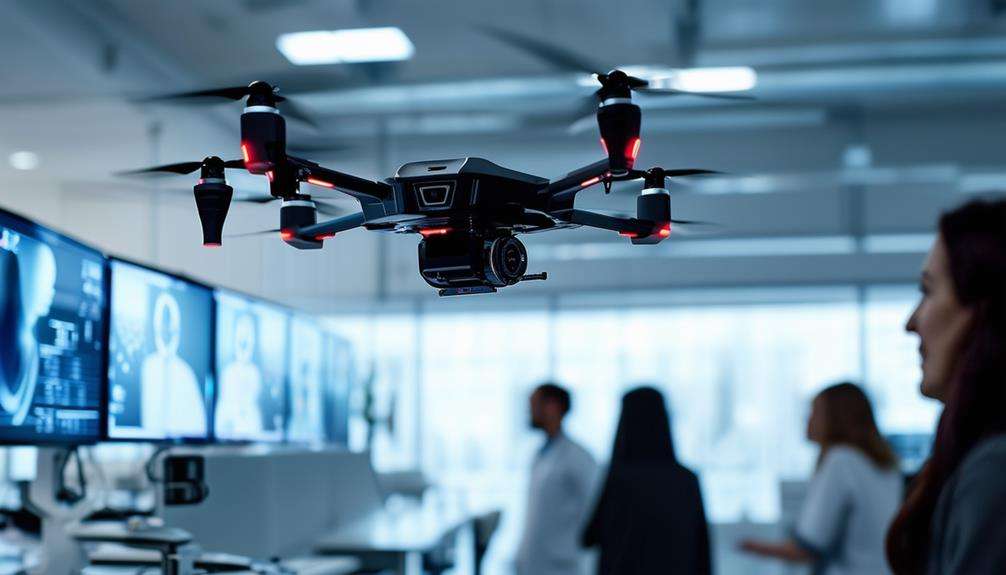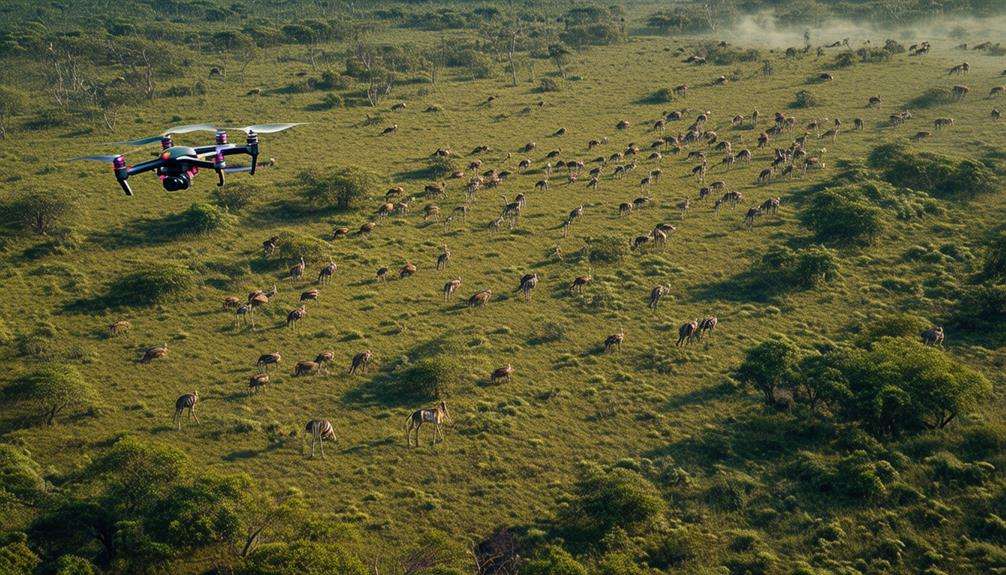Understanding UAV Technology: A Comprehensive Guide to Drones
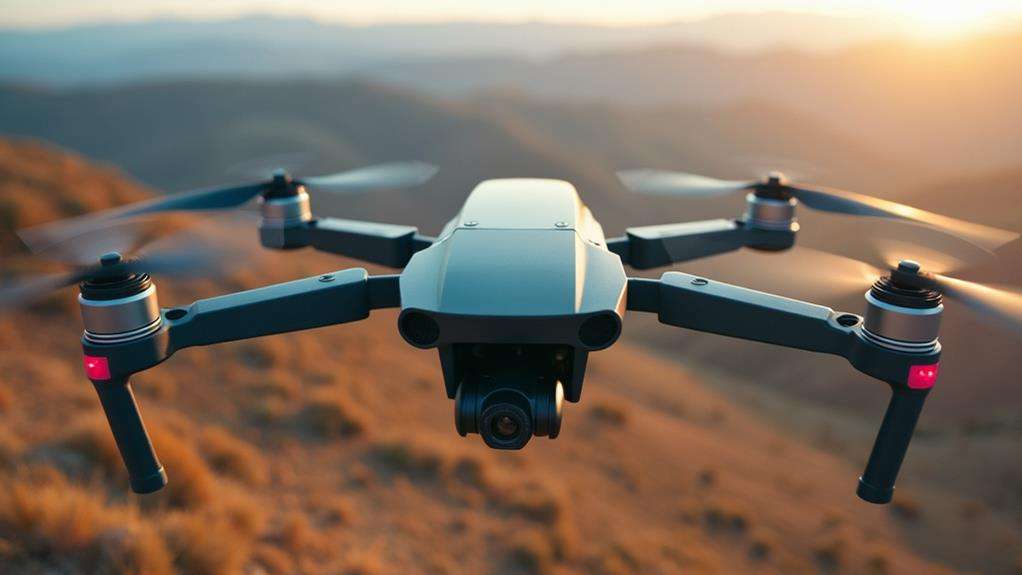
Welcome to the comprehensive guide on UAV technology, where drones have transitioned from exclusive military assets to versatile tools utilized across numerous sectors. This guide will delve into the construction of these aerial devices, their wide-ranging applications, and the regulations governing their use. Whether capturing breathtaking aerial imagery or transforming agricultural practices, drones are revolutionizing industries with their cutting-edge capabilities. Discover the future of drone technology and its potential impact on your life.
History of Drone Technology
Drones, or Unmanned Aerial Vehicles (UAVs), have a rich history dating back to the early 20th century. Initially developed for military reconnaissance during World War I and II, these early UAVs were rudimentary compared to modern models but laid the groundwork for future advancements in drone technology.
In the 1990s, UAVs began transitioning from exclusive military use to civilian applications. This era saw the rise of recreational drones, making UAVs accessible to hobbyists and enthusiasts. The 2000s marked a significant turning point with the widespread availability of consumer drones, driven by advancements in technology and reduced production costs, making sophisticated UAVs affordable for the general public.
As drone technology evolved, UAVs found diverse applications beyond recreation. Aerial photography became immensely popular, offering stunning, previously unattainable perspectives. Drones also revolutionized agriculture by enabling precision farming and played crucial roles in search and rescue operations.
The growing integration of UAVs across various sectors underscores their importance. By 2024, the UAV market is projected to reach $43 billion, reflecting the expansive and evolving applications of drones.
Essential Drone Components
When you delve into the world of UAVs, understanding the essential components is crucial for grasping how these sophisticated machines operate. A drone's efficiency and performance rely heavily on several key elements working together seamlessly.
First, let's talk about the frame. Typically made from lightweight materials like carbon fiber or aluminum, the frame provides structural integrity without adding unnecessary weight, thus enhancing flight performance. The propellers are another vital component. Available in two-blade or three-blade designs, they significantly influence the drone's stability, lift, and maneuverability.
The brushless motors are the powerhouse of your drone. Known for their efficiency and reliability, they enable longer flight times and superior performance compared to brushed motors. The flight controller acts as the drone's brain, stabilizing flight and managing navigation by processing data from onboard sensors.
Drones come equipped with various sensors like gyroscopes and barometers. These sensors help maintain balance, altitude, and orientation, making your drone easier to control and more precise.
Essential Components
- Frame: Constructed from lightweight and robust materials such as carbon fiber or aluminum to ensure structural integrity and improved flight performance.
- Propellers: Available in two-blade or three-blade configurations, these components affect lift, stability, and maneuverability.
- Brushless Motors: These efficient and reliable motors extend flight time and enhance overall performance.
- Flight Controller: The drone's brain, it stabilizes flight and manages navigation by processing data from onboard sensors.
- Sensors: Including gyroscopes and barometers, these help maintain balance, altitude, and orientation.
Understanding these components will give you a solid foundation in UAV technology, ensuring you can operate and maintain your drone effectively.
Types of Drones
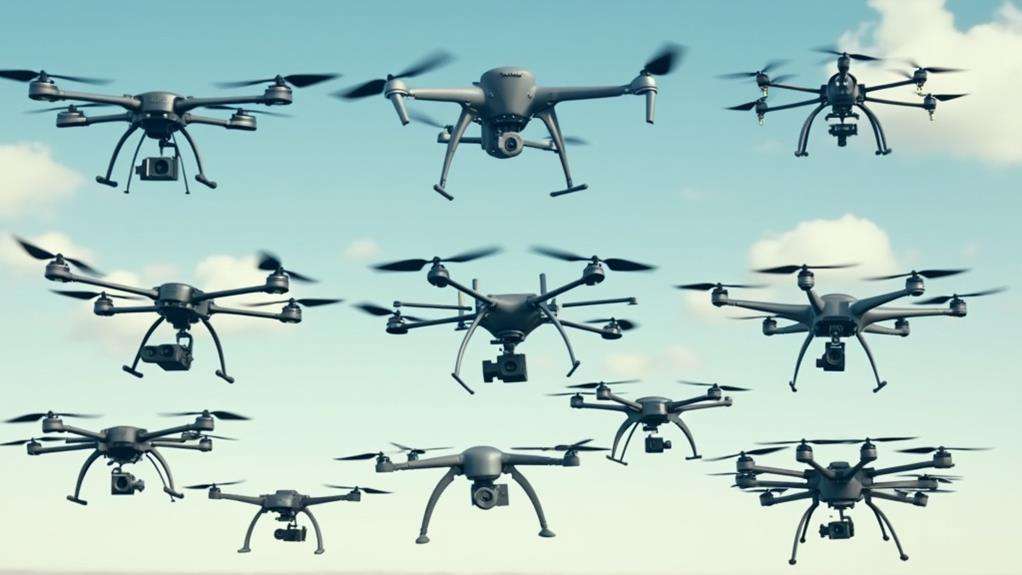
When exploring the types of drones, you'll encounter various features and applications suited to different needs. Consumer drones are ideal for recreational activities and photography. Professional drones, however, offer advanced capabilities beneficial for industries such as agriculture and filmmaking. Military drones are engineered for complex operations, including surveillance and combat missions.
Consumer Drone Features
Consumer drones, primarily designed for recreational use, offer a range of advanced features that enhance the flying experience. Notable models, such as the DJI Mavic series, are equipped with high-resolution cameras capable of capturing 4K video, making them popular among both hobbyists and beginners. These drones are typically quadcopters, utilizing four rotors for lift and maneuverability, and are equipped with advanced stabilization systems for smooth and stable flights.
To further improve the user experience, many consumer drones feature GPS for precise navigation, enabling easy hovering and smooth flight paths even for novice pilots. Additionally, obstacle avoidance sensors are becoming standard, helping to prevent crashes and ensuring safer flights.
Key features commonly found in consumer drones include:
- High-resolution cameras: Capture stunning aerial photos and videos.
- Advanced stabilization systems: Ensure smooth and stable flight performance.
- Obstacle avoidance sensors: Enhance safety by detecting and avoiding potential hazards.
The consumer drone market has expanded significantly, offering options that range from basic models priced under $100 to high-end, feature-rich drones costing over $1,000. Whether you are a novice or an experienced flyer, there is a consumer drone tailored to meet your specific needs.
Professional Drone Uses
Professional drones have become indispensable tools across various industries due to their advanced capabilities and specialized features. Equipped with high-quality cameras and specialized sensors, these drones excel in aerial photography, surveying, and mapping. For instance, the real estate and construction sectors leverage aerial imaging technology to capture detailed site views and create accurate maps.
In agriculture, drones utilize advanced imaging technology to monitor crop health, optimize irrigation, and apply pesticides more efficiently. These agricultural drones are crucial in precision farming, enhancing overall productivity and sustainability.
Surveying drones hold significant value in civil engineering and construction. They simplify site inspections and topographic mapping, drastically reducing time and labor costs while enhancing data accuracy. These drones are essential for precise land surveys and infrastructure planning.
Inspection drones are widely used in industries such as oil and gas, utilities, and telecommunications. They perform critical inspections and maintenance tasks, allowing safe evaluations of hard-to-reach areas without the need for scaffolding or cranes, thereby improving safety and efficiency.
Delivery drones are also gaining traction, particularly in logistics and e-commerce. Companies like Amazon and UPS are exploring drone-based package delivery systems, making them a transformative solution for quick and efficient deliveries.
Military Drone Applications
Professional drones have revolutionized various industries with their advanced capabilities, and military drones, or Unmanned Aerial Vehicles (UAVs), have equally transformed modern warfare and defense operations. These UAVs are primarily used for reconnaissance and surveillance, providing real-time intelligence without risking human lives. Different types of military drones are designed for specific missions, each playing a vital role in defense.
- Tactical UAVs: Ideal for short-range missions, such as the RQ-11 Raven, which offers quick deployment and maneuverability.
- Strategic UAVs: Capable of long-range missions and carrying precision-guided munitions, like the MQ-9 Reaper.
- High-Altitude UAVs: The Global Hawk can fly over 60,000 feet and cover more than 12,000 nautical miles, making it perfect for extensive surveillance.
Equipped with advanced technologies, military drones feature high-resolution cameras, infrared sensors, and signals intelligence capabilities. These technologies enable them to perform complex tasks such as target acquisition and damage assessment. The global military drone market is booming, projected to reach $20 billion by 2026, indicating a growing dependence on UAV technology for defense operations. As military strategies evolve, the role of these specialized drones becomes increasingly critical in maintaining national security and operational superiority.
Consumer Drone Uses
Equipped with high-definition cameras and advanced GPS technology, consumer drones have transformed aerial photography and videography, providing stunning images from unique perspectives. Models like the DJI Mavic series offer professional-level capabilities to hobbyists and enthusiasts. These drones are compact, user-friendly, and boast flight times of up to 31 minutes per charge, making them ideal for capturing breathtaking shots.
Built-in GPS technology in consumer drones enables waypoint navigation, automated flight paths, and real-time tracking, enhancing usability and precision. This makes them perfect for real estate marketing, allowing you to showcase properties from an aerial view and provide potential buyers with a comprehensive look at the location and surroundings. Additionally, drones are invaluable for environmental monitoring, enabling observation of wildlife and natural habitats without disturbance, thus aiding conservation efforts.
The recreational drone market is booming, with consumer drones projected to account for a significant portion of the UAV market, estimated to reach $43 billion by 2024. Whether capturing moments at events or monitoring the environment, consumer drones offer endless possibilities.
Professional Drone Applications
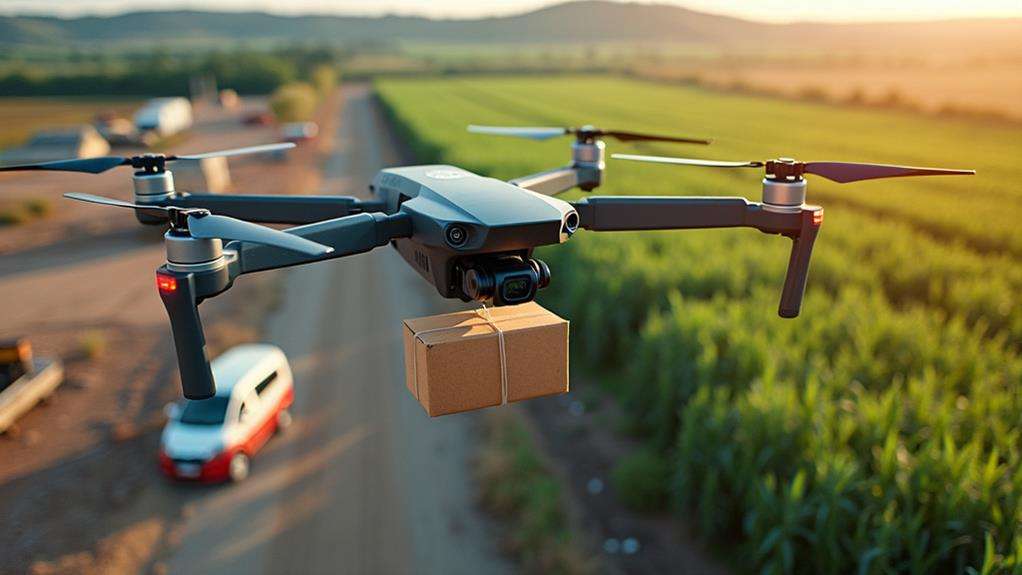
From revolutionizing filmmaking to enhancing agricultural efficiency, professional drones are making a significant impact across various industries. Unmanned Aerial Vehicles (UAVs) are equipped with high-quality cameras and sensors that enable precise data collection and innovative applications.
In agriculture, drones are essential for crop monitoring and precision spraying. These UAVs can significantly improve efficiency and reduce pesticide usage by up to 90% through targeted application. They help farmers monitor crop health, detect issues early, and optimize resource utilization.
In construction, drones optimize site inspections and maintenance. By providing aerial views and real-time progress tracking, they enhance safety by minimizing the need for workers to enter hazardous areas. This leads to more efficient project management and timely completion.
Environmental monitoring is another area where professional drones excel. They collect non-invasive data on ecosystems and wildlife, enabling researchers to track changes and assess habitat health effectively.
Professional drones also find applications in marine settings. Drones for marine inspection can survey large areas quickly, identifying issues that might not be visible from the surface.
- Agriculture: Crop monitoring and precision spraying
- Construction: Site inspections and project monitoring
- Environmental Monitoring: Non-invasive data collection
The commercial drone market is projected to reach over $43 billion by 2024, reflecting their growing demand across various sectors.
Military Drone Functions
Professional drones have revolutionized various civilian industries, but their technological advancements extend far beyond commercial applications. Military drones, or unmanned aerial vehicles (UAVs), are essential to modern warfare, primarily used for reconnaissance, surveillance, and intelligence gathering. Equipped with advanced sensor technology such as high-resolution cameras and infrared sensors, these UAVs can operate in a range of environmental conditions and altitudes, providing real-time data while minimizing risk to human lives.
Here is an overview of the capabilities of different types of military drones:
| Type | Function | Features |
|---|---|---|
| Raven | Short-range recon | Lightweight, portable, real-time video feed |
| Wasp | Tactical surveillance | Compact, high-res cameras, ideal for urban environments |
| MQ-9 Reaper | Long-range strike | Equipped with armaments, long-endurance, advanced sensor suite |
| Global Hawk | High-altitude intel | Extensive range, high-altitude reconnaissance, autonomous flight capabilities |
The U.S. military operates over 7,000 drones, highlighting their critical role in modern warfare and counterterrorism. Increasingly, autonomous capabilities are being developed, enabling missions to be executed with minimal human intervention. This enhances operational efficiency and reduces the cognitive load on pilots, making military drones an indispensable asset in safeguarding national security.
Commercial Drone Benefits
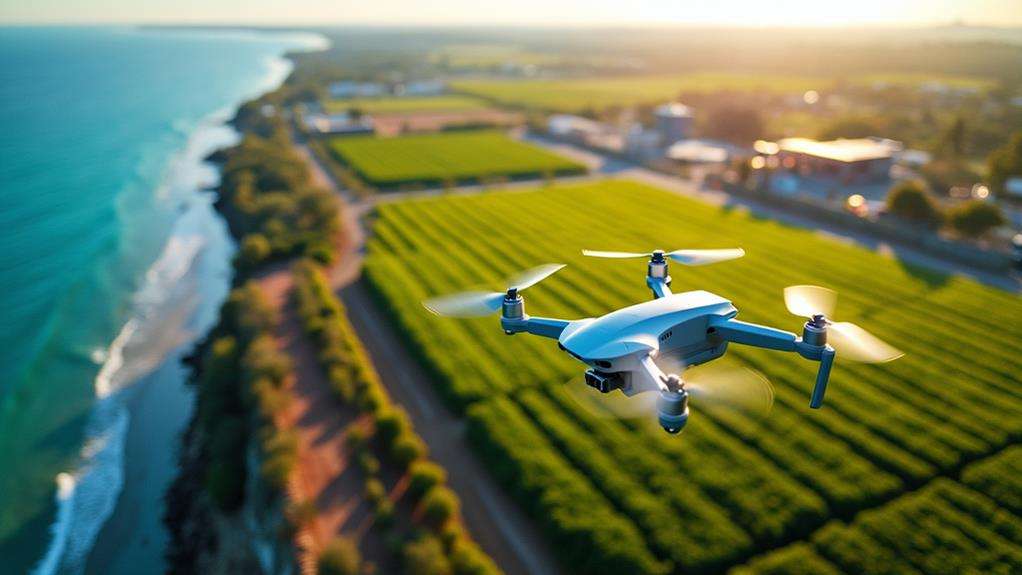
Commercial drones are revolutionizing a multitude of industries, offering substantial benefits that enhance efficiency and precision. These versatile tools are projected to drive the commercial drone market to $43 billion by 2024, with significant impacts in agriculture, logistics, and environmental monitoring.
In agriculture, commercial drones have transformed crop management. They can swiftly cover large areas, performing tasks like crop spraying and health monitoring. The real-time data they collect improves yield efficiency and resource management, providing precise, up-to-date information on crop health to enable faster, informed decision-making.
In logistics, drones streamline delivery processes, reducing both time and costs. Companies increasingly use drones to expedite deliveries, enhancing customer satisfaction and operational efficiency. This capability not only reduces labor costs but also improves overall operational efficiency.
Moreover, commercial drones enhance data collection accuracy across various sectors. They enable detailed site inspections and environmental monitoring with minimal disruption, which is crucial for wildlife conservation and timely ecological responses.
- Enhanced precision in agriculture for better yield management
- Streamlined logistics and delivery for improved customer satisfaction
- Accurate, non-invasive environmental data collection
Commercial drones are undeniably reshaping industry standards.
Drone Regulations
When operating a drone, it is essential to adhere to FAA regulations, particularly if your drone weighs more than 0.55 pounds. Ensure you fly below 400 feet, keep your drone within your line of sight, and avoid restricted airspace unless you have the proper permissions. Failure to comply with these regulations can result in significant fines and legal consequences. Always conduct pre-flight checks and familiarize yourself with local no-fly zones to ensure safe and lawful operation.
Legal Compliance Requirements
Navigating drone regulations is crucial for any UAV operator to ensure safe and legal flights. In the United States, drones must be flown in accordance with FAA mandates to avoid fines and legal issues. If your drone weighs more than 0.55 pounds, it must be registered with the FAA. For commercial use, obtaining a remote pilot certificate under Part 107 is mandatory.
Key legal compliance requirements include:
- Altitude and Visibility: Drones must be flown below 400 feet and always within your line of sight.
- No-Fly Zones: Be aware of specific no-fly zones, especially around airports and sensitive areas, to ensure safety.
- Local Laws: Compliance with local laws is essential, as regulations can vary by state and municipality.
FAA mandates also include conducting pre-flight inspections and avoiding flights in bad weather or near crowds. This minimizes risks to public safety.
Internationally, regulatory frameworks differ significantly, so always familiarize yourself with the specific laws and guidelines in your operating region. Ignoring these rules can lead to severe penalties, making it crucial to stay informed and compliant.
Safety Operation Guidelines
Ensuring safe and legal drone flights requires adherence to specific safety operation guidelines. Drones must be flown below 400 feet and always within the operator's line of sight to minimize collision risks with manned aircraft. The Federal Aviation Administration (FAA) mandates that all drones weighing over 0.55 pounds be registered before operation, promoting accountability and a safer airspace.
Operators should conduct thorough pre-flight inspections, checking for mechanical issues and ensuring that the drone's software is current. Avoid flying over crowds and in inclement weather to reduce the risk of accidents and injuries.
Compliance with local laws and regulations is essential, as different states may have unique restrictions, especially regarding privacy concerns. Be aware of no-fly zones, such as those around airports and military bases, to avoid significant fines and legal repercussions. By following these guidelines, you ensure your drone flights are safe, lawful, and enjoyable.
Emerging Drone Trends
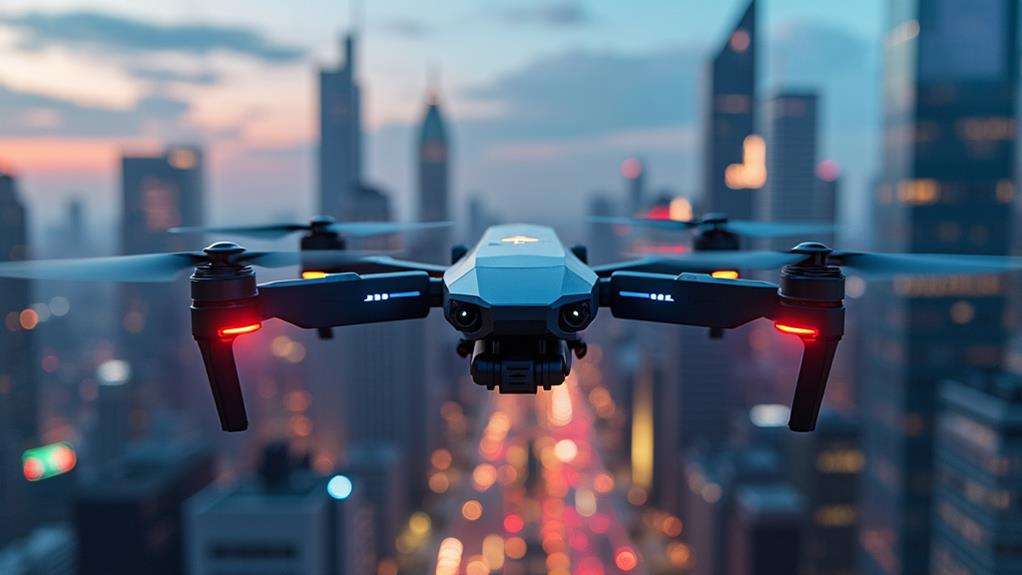
In recent years, the drone industry has experienced remarkable advancements, setting the stage for several emerging trends reshaping the landscape. One of the most significant trends is the rapid growth in drone logistics. Driven by the booming e-commerce sector, the market is projected to expand at a compound annual growth rate (CAGR) of 21.2% by 2030. This surge is fueled by the need for efficient delivery solutions, enabling UAVs to play a crucial role in last-mile delivery.
The integration of artificial intelligence (AI) into drones is another groundbreaking development. AI enhances the autonomy and decision-making capabilities of UAVs, allowing them to perform complex tasks with minimal human intervention. With AI, autonomous drones can now navigate and operate independently, making fully automated delivery systems in urban environments a reality.
Military innovations are also influencing the consumer market, leading to improvements in commercial and recreational drones. These advancements include:
- Longer flight times: Enhanced battery technology and energy-efficient designs.
- Improved payload capacity: Allowing drones to carry more substantial loads.
- Advanced sensor technology: Providing better data collection and operational precision.
These trends are actively shaping the present and future of drone technology, highlighting their growing importance in various sectors.
Industry Perspectives on Drones
Drones are revolutionizing a wide range of industries, from agriculture to real estate, by enhancing efficiency and reducing costs. Unmanned Aerial Vehicles (UAVs) equipped with advanced sensors are making significant strides across multiple sectors. In agriculture, drones are transforming crop monitoring and precision spraying, allowing for real-time assessment of crop health and precise application of fertilizers and pesticides, thereby boosting efficiency and cutting operational expenses.
In real estate, drones provide unique aerial imagery that traditional photography cannot match, vastly improving property visibility and making listings more appealing to potential buyers. High-quality aerial shots offer stunning overhead views that can captivate prospective clients.
In the military, drones are strategically vital for reconnaissance, surveillance, and targeted strikes, making them indispensable in modern warfare. The integration of AI and machine learning is further enhancing the autonomous capabilities of drones, paving the way for broader applications in logistics, delivery services, and environmental monitoring.
The drone industry is projected to reach a market value of $43 billion by 2024, underscoring the transformative impact of UAVs across various sectors. With their growing importance and technological advancements, drones are undeniably shaping the future.


